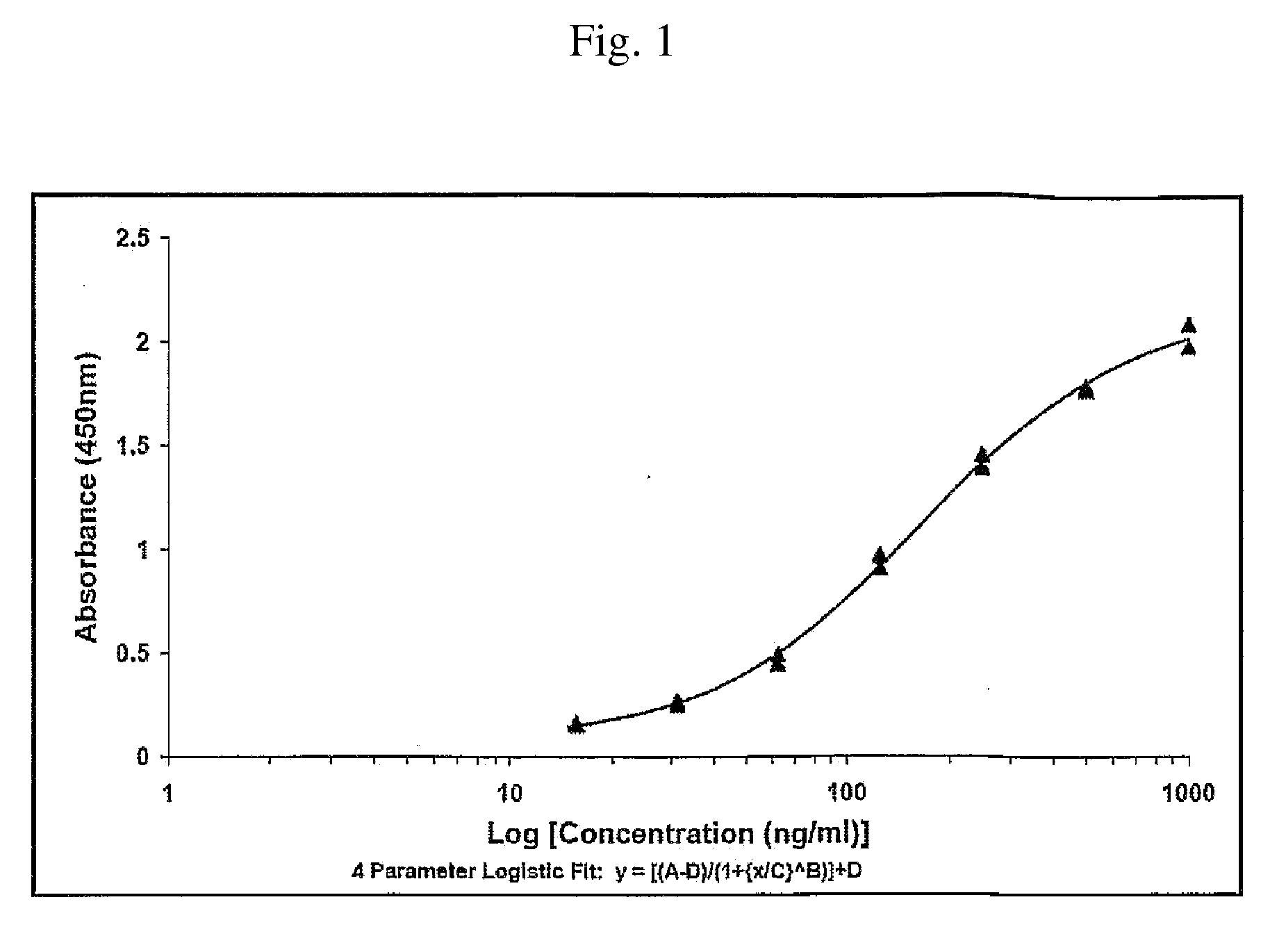Method for immunizing an avian species
a technology for immunization and avian species, applied in combinational chemistry, peptide preparation methods, chemical libraries, etc., can solve the problems of high cost and labor, approach will work with a reasonable expectation of success, and animal discomfort associated with immunization, etc., to achieve the effect of fast and inexpensiv
- Summary
- Abstract
- Description
- Claims
- Application Information
AI Technical Summary
Benefits of technology
Problems solved by technology
Method used
Image
Examples
example 1
Synthesis of a Peptide Library
[0261]A library of peptides with a length of 6 amino acids and of 15 amino acids was synthesized using standard methods. The 20 most commonly occurring (excl. selenocysteine and pyrrolysine) natural amino acids were employed in each reaction and the library thus synthesized at least in theory comprises 206 or 2015, respectively, different peptides.
example 2
Method 1:
[0262]Peptides to be used as antigens are coupled to a carrier. In this method the peptide sequence must contain at least one cysteine residue or an NH2 group in order for the cross linking agent (MBS) to efficiently couple the peptides to the carrier protein Keyhole Limpet Hemocyanin (KLH). In this example, a cysteine residue was added to the peptides as the seventh residue before carrier conjugation.
[0263]Sephadex G-25 fine beads were swelled overnight in 5 ml buffer (0.1 M NaH2PO4 pH 6.0) / g of dry beads at room temperature. The swelled resin was washed 4 times using 0.1 M NaH2PO4 pH 6.0 and poured into a 130×20 mm column. The column was subsequently equilibrated with 15 ml of 0.1 M NaH2PO4 pH 6.0 and the resin was allowed to settle.
[0264]4 mg KLH was dissolved in 0.3 ml of 0.1 M NaH2PO4 pH 6.0. 1 mg m-Maleimidobenzoyl-N-Hydroxysuccinimide ester (MBS) in 150 μl of Dimethylformamide (DMF) was added drop-wise to the KLH solution under stirring. The KLH / DMF m...
example 3
Immunization
Method 1:
[0277]20 and 35 weeks old fowls of the “white Italian” race were immunized on day 0, 10, 20, 100 and 200. Blood samples and eggs were taken on day 0, 7, 14, 21, 28, 35, 42, 49 and antibody concentration (IgY) was measured using ELISA techniques (se in the below).
[0278]The composition used for each immunisation was: 10 μg KLH-peptide dissolved in 0.01 M NaCl buffer (pH 7.2) to a volume of 500 μl and 500 μl Specol to a total volume of 1 ml.
Method 2:
[0279]The chickens are immunized in the breast musculature with a pistol. The animals are immunized at day 1, 10 and subsequently every 4th week. For each immunization one of the following compositions is used:[0280]1. a minimum of 0.5 mg peptide-carrier mixed in the ratio of 1:1 to Freund's Incomplete Adjuvant diluted in PBS to 200 μl.[0281]2. a minimum of 0.5 mg peptide-carrier mixed in the ratio of 1:1 to Super Adjuvant diluted in PBS to 200 μl (for the composition of the Super Adjuvant, please see in the below).
PUM
| Property | Measurement | Unit |
|---|---|---|
| pH | aaaaa | aaaaa |
| pH | aaaaa | aaaaa |
| temperature | aaaaa | aaaaa |
Abstract
Description
Claims
Application Information
 Login to View More
Login to View More - R&D
- Intellectual Property
- Life Sciences
- Materials
- Tech Scout
- Unparalleled Data Quality
- Higher Quality Content
- 60% Fewer Hallucinations
Browse by: Latest US Patents, China's latest patents, Technical Efficacy Thesaurus, Application Domain, Technology Topic, Popular Technical Reports.
© 2025 PatSnap. All rights reserved.Legal|Privacy policy|Modern Slavery Act Transparency Statement|Sitemap|About US| Contact US: help@patsnap.com



